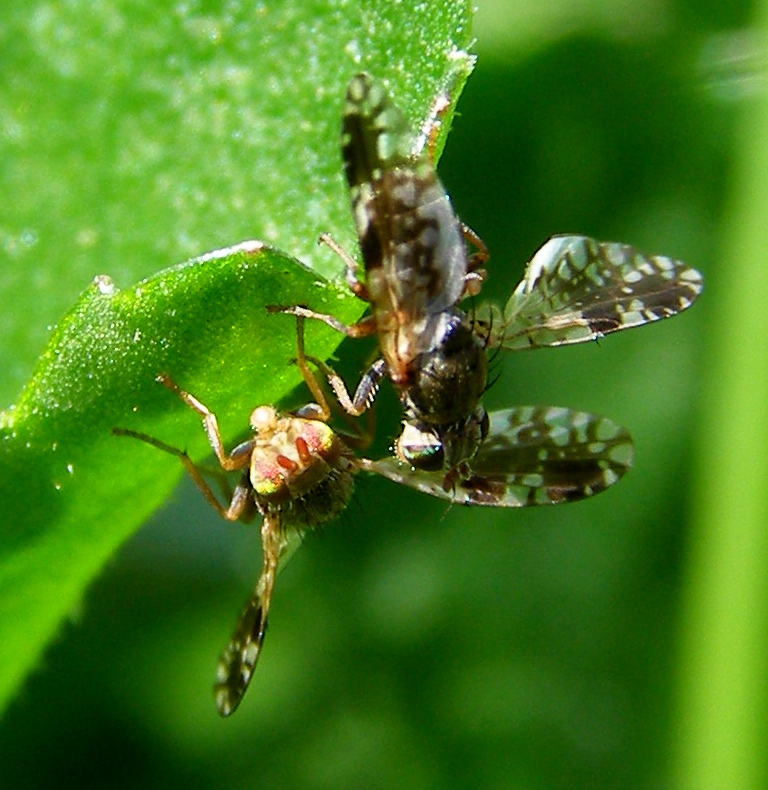
My first Tephritid flies of the year: two male Tephritis neesii (Diptera: Tephritidae) competing for dominance of an ox-eye daisy plant (Leucanthemum vulgare). The females lay their eggs in the developing ox-eye daisy flower heads. Presumably the males that dominate the best flower heads get to mate with the best females.

It seems that the cold spring has not prevented a repeat of the T. neesii plague that occurred last year. I saw hundreds of these flies on my walk round the lakes on Monday; there must have been around 3 or 4 on every ox-eye daisy plant that I looked at.
Photos taken in Whiteknights Park, Reading, UK, on 2013-05-06.
 Thu 2013-05-09
Thu 2013-05-09 